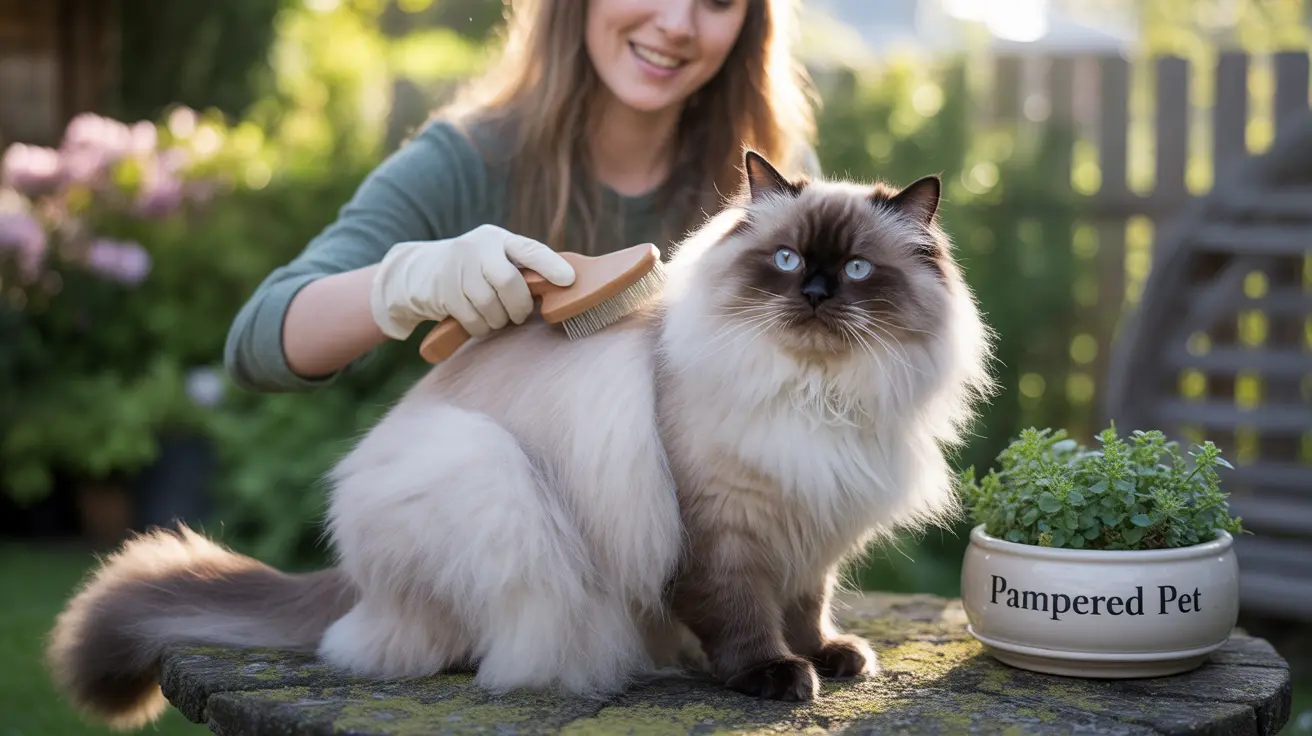If you're considering adding a Himalayan cat to your family while managing pet allergies, you're likely wondering about their hypoallergenic status. As these beautiful, long-haired cats gain popularity, it's crucial to understand their potential impact on allergy sufferers.
Despite their luxurious appearance and gentle nature, Himalayan cats are not hypoallergenic. In fact, their long, dense coats and high grooming needs can make them particularly challenging for people with cat allergies.
Understanding Cat Allergies and Himalayan Cats
The primary allergen in cats, Fel d 1 protein, is found in their saliva, skin cells (dander), and urine. Himalayan cats produce this protein just like any other cat breed. Their frequent self-grooming spreads these allergens throughout their coat, which then shed into the environment.
Several factors make Himalayan cats particularly problematic for allergy sufferers:
- Their long, thick double coat traps and distributes allergens
- Regular shedding spreads allergens throughout the home
- Frequent grooming needs increase human contact with allergens
- Their indoor lifestyle concentrates allergens in living spaces
Managing Allergens with a Himalayan Cat
While not hypoallergenic, there are several strategies to reduce allergen exposure if you're determined to share your home with a Himalayan:
Regular Grooming and Cleaning
Daily brushing and grooming are essential for Himalayan cats, not just for maintaining their coat but also for controlling allergen distribution. This should be done by someone without allergies, preferably outdoors:
- Use a high-quality slicker brush and metal comb daily
- Bathe your cat every 4-6 weeks with pet-safe shampoo
- Vacuum floors and furniture daily with a HEPA-filter vacuum
- Wash cat bedding weekly in hot water
Creating Allergy-Free Zones
Establish boundaries to minimize allergen exposure in sensitive areas:
- Keep bedrooms as cat-free zones
- Install HEPA air purifiers in main living areas
- Use washable slipcovers on furniture
- Consider hard flooring instead of carpeting
Health and Grooming Requirements
Beyond allergy considerations, Himalayan cats require significant maintenance to stay healthy and comfortable:
- Daily facial cleaning to prevent tear stains
- Regular nail trimming and ear cleaning
- Professional grooming every 2-3 months
- Monitoring for signs of matting or skin issues
Frequently Asked Questions
Are Himalayan cats hypoallergenic if they are groomed regularly?
No, regular grooming can help reduce allergens but cannot make a Himalayan cat hypoallergenic. The Fel d 1 protein will still be present in their saliva and skin cells.
How often should I groom my Himalayan cat to prevent matting?
Daily brushing is essential for Himalayan cats. Use a combination of slicker brush and metal comb to prevent mats, focusing on prone areas like behind the ears and under the arms.
What is the best shampoo to use for bathing a Himalayan cat?
Use a cat-specific, tearless shampoo formulated for long-haired breeds. Look for products with moisturizing properties that won't strip the natural oils from their coat.
Can Himalayan cats live well in households with allergy sufferers, and what precautions should be taken?
While possible, it requires significant effort. Implement strict cleaning routines, use HEPA air purifiers, create allergen-free zones, and consider having non-allergic family members handle grooming duties.
How can I prevent my Himalayan cat from overheating due to their dense coat?
Maintain a cool indoor environment, provide plenty of fresh water, consider periodic lion cuts during summer months, and watch for signs of overheating such as excessive panting or lethargy.
While Himalayan cats aren't hypoallergenic, their loving personalities and stunning appearance make them wonderful companions for those who can manage their grooming needs and allergy considerations. Before bringing one home, spend time with the breed to assess your allergic reactions and ensure you're prepared for their extensive care requirements.






